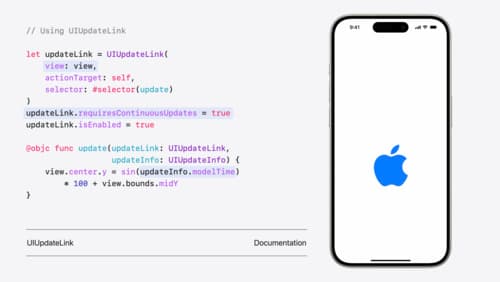Compositional layout
Asked on 2024-08-12
4 searches
Compositional layout is a concept used in both UIKit and SwiftUI to create flexible and dynamic user interfaces. In the context of UIKit, compositional layout is used to display content in different styles depending on the context, such as using an inset grouped appearance in portrait mode and a split view controller sidebar in landscape mode. This approach allows for dynamic content and background configurations based on the layout style, as seen in the implementation for iOS 17.
In SwiftUI, composition is a fundamental concept that allows for the creation of complex user interfaces by combining different views. SwiftUI supports creating lists and other UI elements using a declarative syntax, which can be composed using APIs like ForEach and view builders. This allows for flexible and dynamic UI construction, enabling developers to easily add and modify content without changing the underlying container implementation.
For more details on compositional layout in UIKit, you can refer to the session What’s new in UIKit (08:53). For SwiftUI, the session Demystify SwiftUI containers (03:07) provides insights into composition in SwiftUI.

What’s new in UIKit
Explore everything new in UIKit, including tab and document launch experiences, transitions, and text and input changes. We’ll also discuss better-than-ever interoperability between UIKit and SwiftUI animations and gestures, as well as general improvements throughout UIKit.

Get started with Dynamic Type
Dynamic Type lets people choose their preferred text size across the system and all of their apps. To help you get started supporting Dynamic Type, we’ll cover the fundamentals: How it works, how to find issues with scaling text in your app, and how to take practical steps using SwiftUI and UIKit to create a great Dynamic Type experience. We’ll also show how you can best use the Large Content Viewer to make navigation controls accessible to everyone.

Migrate your TVML app to SwiftUI
SwiftUI helps you build great apps on all Apple platforms and is the preferred toolkit for bringing your content into the living room with tvOS 18. Learn how to use SwiftUI to create familiar layouts and controls from TVMLKit, and get tips and best practices.
